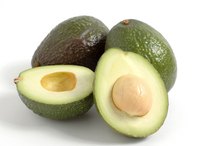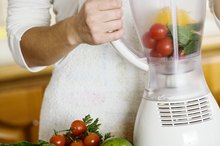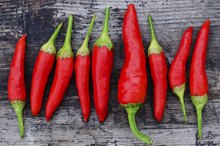How to Get Ripped on a High Carb Diet
Contemporary dieting advice vilifies bread, pasta, dessert and even fruit as public enemy No. 1 when it come to getting a ripped physique. But a comprehensive two-year study published in the “New England Journal of Medicine” concluded that the macronutrient composition -- percentage of protein, fat or carbohydrates in the diet -- has no long-term effect on weight or waist circumference. What matters, they discovered, is the total number of calories consumed. Marc Perry, fitness expert and author of the book, “Get Lean Guide,” echoed this finding on his website. “What you see all the time is ‘nutrition’ experts pontificating about the right number of carbohydrates to eat, and what types of carbohydrates are allowed,” he wrote. He dismisses this one-size-fits-all approach to nutrition, noting that a key component of getting ripped is burning the excess fat that hides muscle. This means it is possible to get ripped on a high-carb diet.
Cut calories. You may have a six pack hiding under that spare tire, and the only way to uncover it is to shed pounds. One pound of fat equals approximately 3,500 calories. So cutting 500 calories per day from your diet yields roughly 1 pound of fat loss per week.
The Best Protein Powders for Fitness and Figure Competitors
Learn More
Write it down. Unless you’re writing down every morsel that passes through your lips, you likely have no idea how many calories you’re consuming. Even the most health-conscious eater finds a food journal eye-opening. Use an online calorie counter to take the guess work out of the process or just write it down on the back of a napkin. What matters is accounting for every calorie spent.
Choose complex carbohydrates that give you a steady stream of energy. This will prevent fluctuations in blood sugar and insulin levels, which promote fat storage. The options are endless: sweet potatoes, brown rice, quinoa, oats, beans, legumes, lentils -- even whole-grain pasta. When you absolutely cannot resist refined carbs, couple them with fat or protein to slow absorption into your blood stream. Spaghetti carbonara, anyone?
The 5-Bite Diet
Learn More
Load up on fruit and vegetables. These foods are low in calories and high in fiber, contain beneficial phytonutrients, vitamins and minerals, and promote muscle retention. Ignore the warnings to avoid so-called “sugary” fruits and vegetables, such as bananas, grapes, watermelon and carrots. Your body processes the natural sugars in these foods differently than it does actual table sugar.
Combine carbohydrates with protein after an intense workout. Joanne Giannini, personal trainer and fitness competitor, recommends high glycemic index carbs in conjunction with protein to her clients after an intense training session. She says the insulin supports rapid delivery of protein to the muscles, resulting in improved recovery and growth.
Tips
Skip the empty calories of carbohydrate junk foods, such as sweetened coffee drinks, baked goods and soda.
Related Articles
References
Resources
Writer Bio
Pamela Ellgen began writing in 2000 for "The Asian Reporter" newspaper. She is an award-winning journalist and writes on religion, culture, health and fitness. Ellgen graduated with a Bachelor of Arts in writing from Washington State University and is a certified personal trainer with the National Academy of Sports Medicine.









